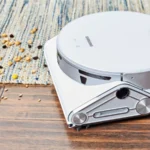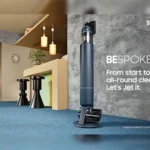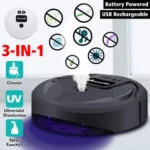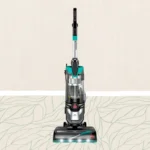Have you ever thought about the quality of the air you breathe in your own home? It’s not something that often crosses our minds, but indoor air pollution can pose a serious threat to our health. Thankfully, smart vacuum cleaners with air purification capabilities have entered the market and are changing the game. These devices not only clean your floors but also filter the air you and your family breathe. In this article, we will explore the importance of air purification in smart vacuums, its benefits, tips for maximum purification, and what the future holds for this innovative technology. So, sit back, relax, and let’s delve into the fascinating world of air purification in smart vacuum cleaners.
The Role of Air Purification in Smart Vacuums
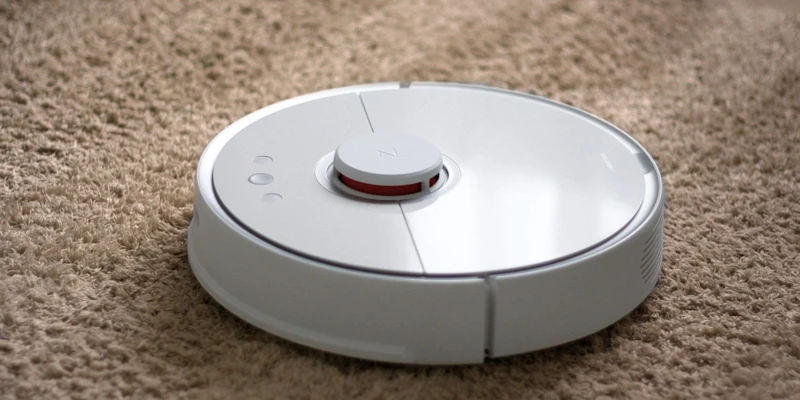
Have you ever wondered if your vacuum cleaner is doing enough to keep your home healthy and clean? While vacuuming is an essential part of maintaining a tidy home, there’s more to it than just picking up visible dirt and debris. Fine dust particles and allergens can linger in the air, impacting the quality of the air you breathe. That’s where air purification comes in. Smart vacuums equipped with air purification technology offer several benefits, from reducing respiratory issues to improving cleaning performance. Let’s take a closer look at why air purification is essential for your smart vacuum cleaner. For more information on removing allergens that trigger asthma and other respiratory issues, check out this article.
1. Reducing Fine Dust Particles in the Air
Fine dust particles can be found in every room, and they can cause a range of health problems if inhaled regularly. That’s why smart vacuum cleaners now come equipped with air purification technology, which is capable of reducing fine dust particles in the air.
To understand how air purification technology works in smart vacuums, it’s important to first understand what fine dust particles are. These tiny particles can combine with other substances in the air to create dangerous compounds that can cause respiratory problems, including lung cancer.
That’s why reducing the number of fine dust particles in the air is so important. With the help of air filters, smart vacuums can capture these tiny particles before they are released back into the air. Here are some ways air purification can help reduce fine dust particles in the air:
- HEPA filters: Smart vacuums equipped with HEPA filters are particularly effective at capturing fine dust particles. These filters can capture particles as small as 0.3 microns, ensuring that very few particles are released back into the air.
- Suction power: Smart vacuums with strong suction power are able to capture more particles from the air. That’s because they are able to pull in more air, increasing the chances of capturing fine dust particles.
- Sealed systems: Smart vacuums with a sealed filtration system are able to capture more fine dust particles, as the system prevents air from escaping before it is filtered.
By reducing the number of fine dust particles in the air, smart vacuums can help improve indoor air quality and prevent respiratory issues. In fact, a study found that using a smart vacuum cleaner can reduce the symptoms of asthma and other respiratory issues.
Air purification technology is a game changer for smart vacuums as it improves their overall cleaning ability and enhances air quality. So if you’re concerned about indoor air quality, consider investing in a smart vacuum with air purification technology.
To learn more about how smart vacuum cleaners can help reduce respiratory issues, read our article on Smart Vacuum Cleaners: How They Can Help Reduce Respiratory Issues. And to learn more about the benefits of HEPA filters for air quality, check out our article on Smart Vacuum Cleaners and HEPA Filters for Improved Air Quality.
2. Removing Allergens That Trigger Asthma and Other Respiratory Issues
Airborne allergens can cause serious respiratory problems, particularly for those who suffer from allergies, asthma, or other respiratory conditions. The removal of such allergens from indoor air is thus crucial for maintaining a healthy living environment. Smart vacuums with air purification capabilities make it possible to eliminate these health hazards from indoor air.
Air purification technology in smart vacuums uses HEPA filters and other advanced filtration systems to capture and trap airborne particles such as dust, pet dander, mold spores, and other allergens. HEPA filters are well-known for their effectiveness at removing incredibly small particulates, with a 99.7% capture rate for particles as small as 0.3 microns.
By using a smart vacuum with an air purification system, you can ensure that allergens are removed from the air, reducing the risk of triggering asthma and other respiratory issues. The vacuum’s suction power sucks in the allergens and prevents them from escaping and circulating back into the air. The advanced filtration system, consisting of several layers of filtration media, captures and traps the allergens, preventing them from being dispersed into the surrounding environment.
The benefits of air purification for allergy sufferers are numerous. Firstly, by using a vacuum with air purification capabilities, allergy sufferers can alleviate their symptoms and breathe easier as allergens are removed from their surroundings. Secondly, by reducing the levels of allergens in the air, the frequency and severity of allergy attacks can be reduced. Thirdly, air purification in smart vacuums eliminates the need for additional air purifiers, reducing the cost and hassle of having multiple devices.
The use of air purification technology in smart vacuums is crucial for the removal of allergens from indoor air. This technology is particularly beneficial for allergy sufferers and those with respiratory conditions, in that it helps to alleviate symptoms, reduce the frequency/severity of allergy attacks, and removes the need for additional air purifiers. Incorporating air purification technology into a smart vacuum is an essential step towards creating a healthier living environment. Don’t forget to check our smart vacuum cleaning for more information.
3. Preventing Unpleasant Odors
Unpleasant odors are not only a nuisance but also a health hazard. They can cause headaches, nausea, and other discomforts. The good news is that smart vacuum cleaners equipped with air purification technology can help eliminate these odors in various ways.
Activated Carbon Filters: One of the most effective ways to combat odors is through the use of activated carbon filters. These filters are made of activated carbon pellets that attract and trap odor molecules. When the air passes through the filter, the odors are absorbed, leaving behind fresh, clean air. The advantage of activated carbon filters is that they are highly porous, which means they can capture a large number of molecules. The filters are usually washable and reusable which helps to keep the cost of replacement filters low.
UV-C Technology: Another way to eliminate odors is through the use of UV-C technology. This technology uses ultraviolet light to kill bacteria and fungi that cause unpleasant odors. As a result, the air in your home becomes fresher and cleaner. However, it is important to note that UV-C technology does not eliminate odor molecules themselves. Instead, it eliminates the source of the odor. With that said, for best performance, it’s recommended to use activated carbon filters in conjunction with UV-C technology,.
Ozone: Some smart vacuum cleaners use ozone, a highly reactive form of oxygen, to eliminate odors. Ozone reacts with odor molecules, neutralizing them in the process. The advantage of this technology is that it can eliminate even the most stubborn odors. However, it’s important to use ozone technology carefully as it can have an adverse effect on our health. Ozone can cause respiratory issues, irritation of the eyes, and other health-related problems. Ozone should not be used in a room with people or animals present.
To summarize, unpleasant odors are not only irritating but also pose health hazards. Smart vacuum cleaners with air purification technology can help to eliminate these odors. Activated carbon filters, UV-C technology, and ozone are the most popular ways that smart vacuums can eliminate unpleasant odors. However, caution must be taken when using the ozone technology.
4. Enhancing Filtration Efficiency
One of the key benefits of air purification in smart vacuum cleaners is the enhancement of filtration efficiency. By removing fine particles and allergens from the air, air purification systems reduce the amount of debris that is capable of passing through the vacuum’s filtration system.
This results in several benefits:
| 1. Improved indoor air quality: | The removal of fine particles from the air means that there is less dust, allergens and other pollutants in the air. This leads to improved indoor air quality, which can reduce respiratory symptoms and allergies. |
| 2. Better suction power: | Airborne particles that pass through the vacuum’s filtration system can decrease its suction power, making it less effective at cleaning floors and carpets. By reducing the amount of debris that passes through the filter, air purification systems can help maintain the vacuum’s suction power, which leads to better cleaning performance. |
| 3. Protecting the vacuum’s motor: | High levels of dust and debris can cause damage to the vacuum’s motor, leading to breakdowns and shortened lifespan. By removing these particles from the air, air purification systems extend the life of the vacuum and prevent costly repairs. |
| 4. Improved filter life: | When the air purification system is removing fine particles from the air, it reduces the amount of material that goes through the filter. This prolongs the filter’s lifespan, which reduces the need for frequent replacements and saves money on maintenance costs. |
Enhancing filtration efficiency is an important aspect of air purification in smart vacuum cleaners. It not only improves the performance and lifespan of the vacuum itself, but also contributes to better indoor air quality and overall health.
5. Protecting the Vacuum Cleaner’s Internal Components
Ensuring protection of the vacuum cleaner’s internal components is crucial for any appliance that is designed to last. Without proper air purification, dust and dirt can accumulate and cause damage to the vacuum’s motor, fan, and other mechanical components.
One of the main ways that air purification helps protect the vacuum cleaner’s internal components is by preventing clogs. If too much dust and debris builds up in the vacuum’s filters or dustbin, it can cause the suction to weaken and put extra strain on the motor. Over time, this can wear down these vital components, and the vacuum may no longer function properly.
Another crucial component that air purification can protect is the motor of the vacuum itself. Without adequate air purification, fine particles of dust can enter the motor and cause it to overheat. This can lead to the motor burning out and rendering the vacuum unusable.
To further protect the vacuum cleaner’s internal components, it’s important to use high-quality filters that effectively capture fine dust particles and other debris. HEPA filters are especially effective at capturing small particles that can cause damage to the vacuum’s internal components. Regular cleaning of these filters and the dustbin is also important for maintaining the vacuum’s overall performance.
Proper air purification not only makes for a healthier environment but also helps ensure the longevity and reliability of your smart vacuum cleaner. By taking steps to protect the internal components, such as preventing clogs and using high-quality filters, users can enjoy the benefits of a constantly efficient and reliable appliance.
Here is a breakdown of some of the key ways that air purification helps protect the vacuum cleaner’s internal components:
| Benefit of Air Purification | How it Protects the Vacuum Cleaner’s Internal Components |
|---|---|
| Prevents clogs | Keeps suction power strong and reduces wear and tear on motor and other components |
| Prevents overheating of motor | Keeps motor from burning out due to fine particles entering it |
| Enhances efficacy of filters | Reduces likelihood of small particles escaping into the motor and other components |
| Increases lifespan of vacuum cleaner | Ensures consistent performance for years to come |
The Benefits of Air Purification in Smart Vacuums
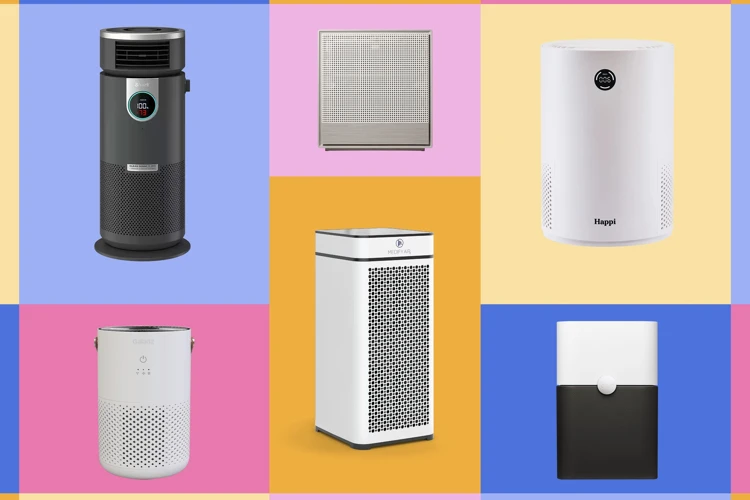
It’s no secret that air pollution can have a negative impact on our health. From allergens to unpleasant odors, the air we breathe can affect our overall well-being. This is why air purification is such an important feature in smart vacuums. By trapping and eliminating harmful particles, smart vacuums that incorporate air purification technology can make a significant difference in the quality of air in our homes. In this section, we’ll take a closer look at the various benefits of choosing a smart vacuum with air purification capabilities. So let’s dive into the world of cleaner air and all the advantages that come with it.
1. Improved Air Quality and Overall Health
Air purification in smart vacuum cleaners is essential for improving the air quality in our homes, which in turn, leads to a better overall health. Studies show that poor indoor air quality can trigger respiratory problems, allergies, and even contribute to the development of serious illnesses such as heart disease and cancer. This is why by investing in a smart vacuum cleaner with air purification features, you’re taking a crucial step towards safeguarding your health and that of your family.
Air purification in smart vacuum cleaners helps remove fine dust particles, allergens, and unpleasant odors that contaminate the air in your home. Fine dust particles, for example, can cause lung irritation and respiratory problems, especially for people with asthma or other respiratory conditions. By eliminating these particles, you’ll breathe cleaner air that is less likely to cause health complications.
Allergens such as pollen, pet dander, and dust mites can also trigger allergies and worsen asthma symptoms. But with the air purification feature in smart vacuum cleaners, these allergens can be effectively removed, leading to a significant relief from symptoms of allergies and asthma.
Additionally, smart vacuum cleaners with air purification features help eliminate unpleasant odors that can make it difficult to enjoy fresh and clean indoor air. These odors can come from cooking, smoke, pets, and even cleaning chemicals. By eliminating these odors, the air purification feature in smart vacuum cleaners helps you enjoy a clean, fresh-smelling indoor environment.
Investing in a smart vacuum cleaner with air purification features offers numerous benefits, and one of the most significant is improved air quality and overall health. You’ll breathe cleaner air, reduced risk of allergies and asthma, fewer unpleasant odors, and a healthier indoor environment overall. It’s a worthwhile investment that could pay off in the long term by shielding you and your family from numerous health complications.
2. Longer Life of Your Smart Vacuum
One of the key benefits of air purification in smart vacuums is that it can significantly extend the life of your device. Vacuums are an investment, and you want to make sure that they last as long as possible to get the most value out of them. Here are a few ways that air purification can help to accomplish this:
| Reduced Wear and Tear | By trapping fine particles and allergens in the air, an air purifier in your vacuum can keep those particles from getting into the inner workings of the machine. This, in turn, reduces wear and tear on the motor, filters, and other components. When there is less dirt and debris clogging up your vacuum, it works more efficiently and requires less maintenance or repairs over time. |
| Less Overheating | Another benefit of air purification in your smart vacuum is that it can help prevent overheating. When the motor in your vacuum is working harder to try and suction in dirt and debris, it can generate a lot of heat. Over time, this can cause damage to internal components and lead to decreased efficiency. An air purifier can help to reduce the workload on the motor by trapping more particles in the air before they enter the vacuum, reducing the risk of overheating and extending the life of your device. |
| Increased Durability | Because the air purifier helps protect your vacuum’s internal components and reduce the workload on the motor, the overall durability of the machine can increase. This means that you can expect your smart vacuum to last longer without needing to be replaced, saving you money in the long run. Additionally, with less wear and tear on the filters and other components, you’ll likely spend less time and money on maintenance and replacement parts. |
Investing in a high-quality smart vacuum with an air purifier can provide numerous benefits, including a longer life for your device. With the reduced wear and tear, less overheating, and increased durability that result from air purification, your smart vacuum can work more efficiently and last longer, providing you with more value over time.
3. Better Cleaning Performance
When it comes to cleaning performance, air purification plays a crucial role in ensuring that the air is clean and healthy while you vacuum. By removing dust, allergens, and unpleasant odors from the air, smart vacuum cleaners with air purification technology can provide a more effective and efficient cleaning experience.
One way that air purification can enhance cleaning performance is by preventing the circulation of dust and dirt particles in the air. With traditional vacuum cleaners, the suction action of the vacuum can often stir up dust and dirt, causing it to spread out and resettle in other areas of the room. However, with the advanced filtration technology of smart vacuums with air purification, these fine dust particles can be trapped and removed from the air, preventing them from further contaminating your space.
Another benefit of air purification in smart vacuums is the removal of allergens that could trigger asthma and other respiratory issues. By removing these allergens from the air, people with allergies or other sensitivities can breathe easier and experience less discomfort, improving their overall health and well-being. The powerful air purification technology in smart vacuums can capture and remove allergens such as pollen, pet dander, and dust mites.
Air purification also plays a critical role in removing unpleasant odors from the air. In many cases, vacuuming can kick up dust and dirt particles that release unpleasant odors into the air. By removing these odors, smart vacuums can leave your home smelling fresh and clean.
The combination of air purification and vacuuming technology in smart vacuums can lead to better cleaning performance and a healthier environment overall. By removing fine dust particles, allergens, and unpleasant odors from the air, smart vacuums are able to provide a more thorough and efficient cleaning experience, while also improving air quality and promoting better health.
| Air Purification Benefits for Cleaning Performance |
|---|
| Prevents the circulation of dust and dirt particles in the air |
| Removes allergens that could trigger asthma and other respiratory issues |
| Removes unpleasant odors from the air |
| Provides a more thorough and efficient cleaning experience |
| Improves air quality and promotes better health |
Tips for Maximum Air Purification in Your Smart Vacuum Cleaner
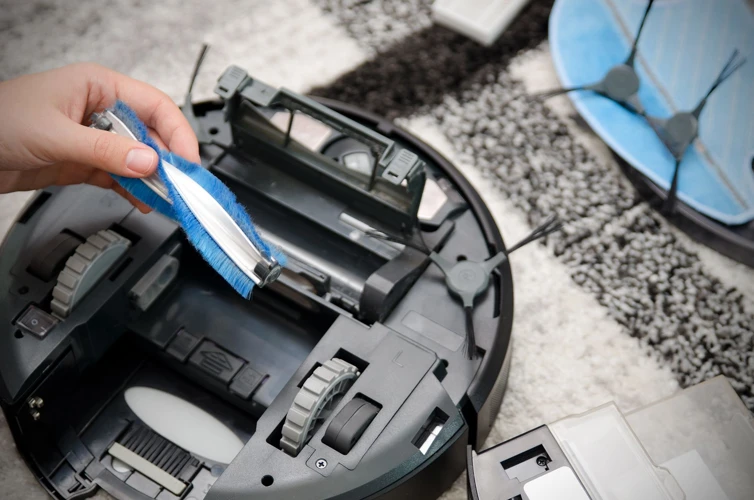
Keeping your smart vacuum cleaner running efficiently is crucial to ensure maximum air purification performance. While air purification is a priority for most smart vacuum owners, it is equally important to implement some tips and tricks to make the most out of this feature. In this section, we will share some practical advice on how to achieve the highest level of air purification in your smart vacuum cleaner. By following these tips, you will have cleaner air in your home and prolong the life of your vacuum cleaner. So, let’s dive in and explore the best ways to achieve maximum air purification!
1. Regular Cleaning of Filters and Dustbins
Regular cleaning of filters and dustbins is crucial to ensure maximum air purification in your smart vacuum cleaner. Dirty filters and dustbins can compromise the air purification process and reduce the efficiency of your vacuum cleaner. It is important to include this maintenance task in your cleaning routine.
To make sure you don’t miss the cleaning schedule, create a cleaning calendar or set reminders on your phone. It’s an easy way to keep your vacuum cleaner in tip-top condition.
When cleaning the filters and dustbins, make sure to follow the manufacturer’s instructions. Below are some general tips to keep in mind:
| Task | Frequency | Cleaning Method |
|---|---|---|
| Clean dustbin | After every use | Remove the dustbin from the vacuum cleaner and empty it directly into a trash can. Rinse it with warm water and mild soap. Dry it completely before reattaching it to the vacuum cleaner. |
| Clean pre-filter | Every 1-2 months | Remove the pre-filter from the vacuum cleaner and gently tap it against a hard surface to remove any debris. Rinse it with warm water and mild soap. Let it dry completely before reattaching it to the vacuum cleaner. |
| Clean HEPA filter | Every 6 months | Remove the HEPA filter from the vacuum cleaner and gently tap it against a hard surface to remove any debris. Rinse it with warm water and mild soap. Let it dry completely before reattaching it to the vacuum cleaner. |
By following these simple tips, you can ensure that your smart vacuum cleaner is working at maximum air purification capacity, resulting in improved air quality and overall health benefits. Remember to always refer to your vacuum cleaner’s manual for specific cleaning instructions and frequencies.
2. Use of High-Quality HEPA Filters
When it comes to maximizing air purification in your smart vacuum cleaner, one of the most important factors is the quality of the filter used. This is where HEPA filters come into play.
HEPA filters are high-quality air filters that are designed to capture small particles that other filters may miss. They are effective in removing dust, pollen, pet dander, and other allergens from the air.
Using a high-quality HEPA filter in your smart vacuum cleaner not only ensures that the air in your home is free from harmful particles, but it also helps to extend the life of your vacuum cleaner. This is because HEPA filters are designed to last longer than regular filters, meaning you won’t have to replace the filter as frequently.
Here is a comparison between regular filters and HEPA filters:
| Regular Filters | HEPA Filters | |
|---|---|---|
| Efficiency | Can capture large particles but may miss smaller particles that can cause health issues. | Can capture particles as small as 0.3 microns, ensuring that even the smallest particles are removed from the air. |
| Lifespan | May need to be replaced frequently, especially if you vacuum frequently. | Designed to last longer than regular filters, reducing the need for frequent replacements. |
| Cost | Relatively inexpensive, but may need to be replaced frequently. | More expensive than regular filters, but lasts longer and provides better air purification. |
When shopping for a HEPA filter for your smart vacuum cleaner, be sure to look for one that is compatible with your model of vacuum cleaner. It is also important to choose a filter from a reputable manufacturer to ensure that you are getting a high-quality product.
Using a high-quality HEPA filter in your smart vacuum cleaner is an essential step in maximizing air purification. By doing so, you will not only remove harmful particles from the air you breathe but also extend the life of your vacuum cleaner.
3. Vacuuming with Suction Control on a Low Setting
When it comes to maximizing air purification in your smart vacuum cleaner, vacuuming with suction control on a low setting is a practical solution. The reason behind this is that high suction power can generate more dust, which could overwhelm the filters and contaminate the air quality.
To give you a better idea, here’s a table highlighting the ideal suction power based on the type of surface you are cleaning:
| Surface Type | Ideal Suction Power Setting |
|---|---|
| Hardwood floors | Low |
| Carpeted floors | Medium |
| Upholstery and curtains | Lowest setting possible |
By using the right suction power setting for each surface, you not only cleanse the area effectively but also prevent the accumulation of fine dust particles that cause poor indoor air quality. Additionally, you’ll prolong the lifespan of your smart vacuum cleaner, as you aren’t overstraining the suction motor or any other internal components.
It’s important to note that the suction power of each vacuum cleaner varies depending on the manufacturer and model. As such, always consult your vacuum cleaner manual for specific recommendations on how to optimize air purification and cleaning performance. If you vacuum with suction control on a low setting, you can breathe cleaner air and prolong the life of your smart vacuum cleaner.
4. Emptying the Dustbin Frequently
When it comes to maximizing air purification in your smart vacuum cleaner, one essential tip is emptying the dustbin frequently. This is because a full dustbin can lead to a decrease in suction power, which can reduce the vacuum’s efficiency in cleaning and filtering the air.
To avoid this issue, it is important to establish a regular routine of emptying the dustbin. This can vary depending on the size of the dustbin and how frequently you use the vacuum cleaner. However, as a general rule of thumb, it is recommended to empty the dustbin after every use or every two uses if you vacuum frequently.
To help you keep track of when to empty the dustbin, some smart vacuum cleaners come with sensors that indicate when the dustbin is full. Additionally, you can also set reminders on your phone or other devices to help you remember to empty the dustbin.
Another important consideration when emptying the dustbin is to do it in a way that minimizes dust and allergen exposure. Wearing a mask and gloves can help protect you from inhaling any particles while also keeping your hands clean.
Additionally, it is best to empty the dustbin in a well-ventilated area, such as outdoors or near an open window, to prevent any dust or allergens from settling back into the air inside your home. Avoid shaking the dustbin vigorously, as this can also release dust and allergens back into the air.
By incorporating the habit of frequently emptying the dustbin into your vacuuming routine, you can help maintain optimal suction power and air purification in your smart vacuum cleaner.
The Future of Air Purification in Smart Vacuum Cleaners
As smart vacuum cleaners continue to evolve, the future of air purification technologies looks bright. One major trend is the use of advanced sensors that can detect and analyze fine dust particles, allergens, and other pollutants in real-time. This data can then be used to adjust the vacuum’s airflow and filtration system for more efficient and targeted cleaning.
Another promising development is the integration of machine learning and artificial intelligence (AI) algorithms into smart vacuums. This can help the device “learn” about the specific air quality and filtration needs in a given environment, and adapt its cleaning methods accordingly. For example, a vacuum could be programmed to focus more heavily on removing pollen during allergy season, or to prioritize pet hair removal in a household with pets.
Other potential advancements in air purification for smart vacuums include the use of ultraviolet (UV) light, which has been shown to kill certain bacteria and viruses, and electrostatic filtration technologies that can capture even smaller particles than traditional HEPA filters.
As the demand for cleaner indoor air continues to grow, it’s likely that smart vacuum cleaners will play an increasingly important role in meeting this need. In the future, we may see a wide range of innovative air purification solutions integrated into these devices, from advanced air sensors to cutting-edge filtration technologies. Whether you’re looking to improve your home’s air quality, extend the life of your vacuum cleaner, or simply enjoy a cleaner, healthier living environment, the future of air purification in smart vacuums looks very promising indeed.
Conclusion
In conclusion, it is evident that air purification plays a crucial role in smart vacuum cleaners. By reducing fine dust particles, removing allergens, preventing unpleasant odors, enhancing filtration efficiency, and protecting the vacuum cleaner’s internal components, air purification can lead to improved air quality, longer life of your smart vacuum, and better cleaning performance.
However, it is essential to ensure maximum air purification in your smart vacuum cleaner by regularly cleaning filters and dustbins, using high-quality HEPA filters, vacuuming with suction control on a low setting, and emptying the dustbin frequently. These tips can help you unlock the full potential of air purification in your smart vacuum cleaner.
Moreover, the future of air purification in smart vacuum cleaners is bright, with the emergence of advanced features such as UV-C sterilization and integration with smart home systems. These innovations aim to provide an even more comprehensive cleaning experience with improved air quality.
It is clear that the importance of air purification in smart vacuum cleaners cannot be overstated. By investing in a smart vacuum cleaner that prioritizes air purification, you are not only achieving a cleaner home but also contributing to your overall health and well-being. So, start prioritizing air purification today and enjoy all the benefits it has to offer!
Frequently Asked Questions
What is air purification in smart vacuums?
Air purification in smart vacuums is the process of removing particles and pollutants from the air as you vacuum floors and carpets. Smart vacuums with air purification have advanced filters and technology that trap allergens, dust and other air contaminants, releasing fresh, clean air into your home.
How does air purification in smart vacuums help reduce fine dust particles?
The air purification system in smart vacuums includes powerful filters that capture fine dust particles that would otherwise be released into the air during vacuuming. The filters can trap particles as small as 0.3 microns, ensuring that your indoor air is free from harmful dust.
Can air purification in smart vacuums help with allergies?
Yes, air purification in smart vacuums can help with allergies. The advanced filtration system can capture allergens such as pollen, pet dander, and dust mites that can trigger allergic reactions. This, in turn, contributes to cleaner indoor air, which can alleviate allergy symptoms.
How does the air purification system in smart vacuums prevent unpleasant odors?
The air purification system in smart vacuums can remove unpleasant odors in two ways. First, it can prevent pet and other odors from being released into the air during vacuuming. Second, it can remove existing odors from the air, leaving your home smelling clean and fresh.
Will air purification affect the performance of a smart vacuum cleaner?
No, air purification does not affect the performance of a smart vacuum cleaner. In fact, it can improve cleaning performance by preventing particles and pollutants from being released into the air during vacuuming that can settle on other surfaces.
What are the benefits of using a smart vacuum with air purification?
The benefits of using a smart vacuum with air purification include improved indoor air quality, longer vacuum lifespan, better cleaning performance, and a reduction in allergy symptoms.
How often should the filters and dustbin be cleaned in a smart vacuum with air purification?
Filters and dustbins in a smart vacuum with air purification should be cleaned regularly, preferably after every use. This will ensure that the filters remain efficient and the dustbin is free of blockages, allowing the vacuum to maintain maximum suction power and filtration efficiency.
What is a HEPA filter?
A HEPA filter is a type of filter that can capture particles as small as 0.3 microns. HEPA filters are highly efficient and are capable of removing 99.97% of particles from the air.
Why is suction control on a low setting recommended when vacuuming with air purification?
Suction control on a low setting is recommended when vacuuming with air purification because it reduces the amount of dust and particles that are stirred up and released into the air during vacuuming. This helps ensure that the advanced filter can capture and remove the majority of the particles, resulting in cleaner indoor air.
What can we expect from the future of air purification in smart vacuum cleaners?
In the future, we can expect even more advanced filtration technology, including the ability to sense and automatically adjust to air quality levels, as well as additional features such as integration with smart home systems and voice control.

